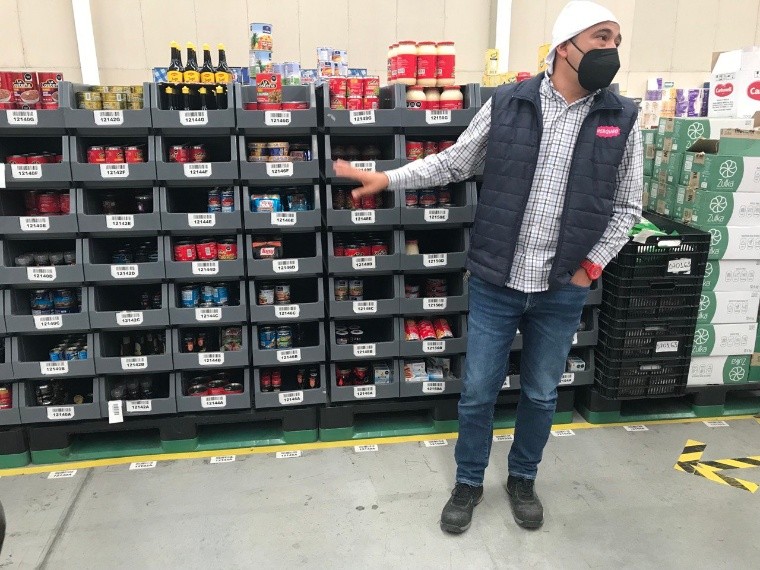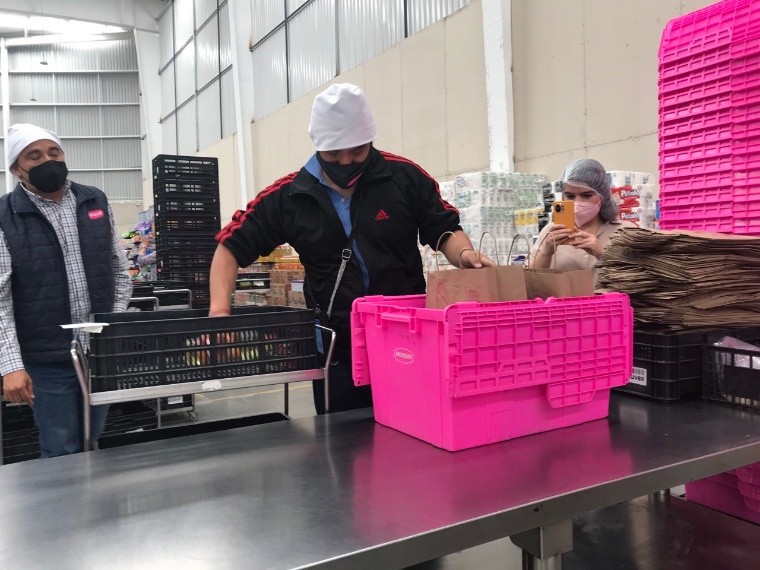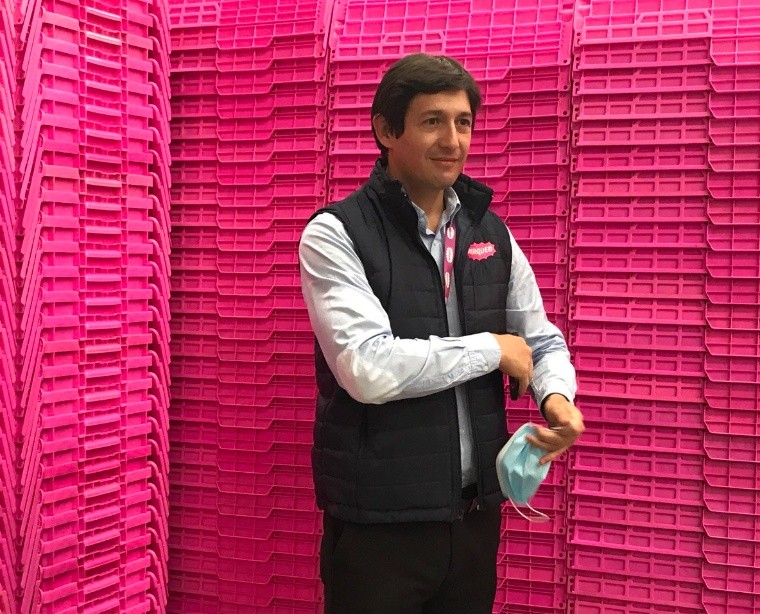Within the industrial zone of Vallejo, very close to one of the main entrance roads to Mexico City, Calzada Vallejo, a business model emerges that, in order to grow and develop, puts the logistics and technological infrastructures of the company to the test. Mexican capital. The dark storesor dark stores, have become very popular in the main cities of the country and the Colombian Marketing bet on this model in an area that was not used to being served by innovation until a few years ago.
Merqueo arrived in Mexico at the end of 2019, attracted by what other startups like rappi or Just, the latter founded just a few months before the Colombian. And, like the entire e-commerce industry, the Covid-19 pandemic was a first test of a business model based on precision and speed.
With more than 1,200 square meters of extension, Merqueo’s main dark store is in the Coltongo neighborhood, in the Azcapotzalco mayor’s office, very close to the industrial plants of other companies such as Bimbo and FEMSA, and to the industrial innovation project of the administration of Claudia Sheinbaum, Vallejo-i. The company has also opened smaller dark stores in Colonia Roma, Santa Fé and San Simón.

Photo EE: Rodrigo Riquelme
a dark store
Although the concept is not as new as it may seem – it was first used in the UK in 2009 – dark stores are a pandemic phenomenon. It is enough to see the growth that Merqueo had in 2021, when it increased its total sales by 10 times compared to 2020, according to its own data. Something that does not seem to stop, as the startup plans to triple its storage capacity from 200,000 to 600,000 products only in its Vallejo store.
The model is more or less simple: a warehouse that serves as a store exclusively dedicated to those who choose to buy online. And although there may be obscure stores for shoes, technology or any other product, Merqueo’s commitment is to the retail trade of fruits, vegetables and, in general, a good part of the products that one can find in a supermarket.
A consumer only has to download their app to access different delivery time and schedule options for 2,000 different products. From supermarket delivery the next day, in two-hour slots, between 5 in the morning and 8 at night, to scheduled deliveries in an hour and a half, an hour and forty-five minutes; without forgetting, of course, the company’s star service.

Javier Santiago, Director of Marketing Operations in Mexico. Photo EE: Rodrigo Riquelme
Three minutes
When a consumer orders one or more products in the Ultra scheme, one of the 100 workers in your dark store has three to five minutes to collect and pack all the products ordered by the customer. Therefore, most of the sauces, preserves and toilet paper are ordered according to the analysis of consumer orders. In this way, it is more logical that the Valentina sauce is next to the bags of chips and not next to other sauces.
The delivery man will then have the mission of delivering the order in between 20 and 25 minutes, since within the Ultra scheme, the order will be free if it does not reach its destination in less than 30 minutes. This service is enabled within the app based on the availability and scope of Merqueo’s dark stores. Its installation on Guaymas street allows it to serve the Condesa, Escandón and several other neighborhoods in the center of the city.
One of the reasons why Merqueo has the ability to streamline the process of buying and delivering products and deliver in less than 30 minutes is that it does not have to resort to other traditional stores to meet demand, but instead goes directly to suppliers that they satisfy the startup’s inventory according to their systems.

A Merqueo worker packages the products of an order placed through the application. Photo EE: Rodrigo Riquelme
Cost effectiveness
When I say that the Marketing model is being put to the test ─not only for her but for all the startups that apply it─ it is because it is not yet completely profitable. This is confirmed by Jairo Medina, for whom only some of the company’s facilities in Colombia have achieved profitability, something that is expected to happen in Mexico in the next two years.
“It is very difficult to make a model profitable when you have just started an operation in a country. In Colombia, for example, we already have profitable warehouses and cities. In Mexico we have not yet reached that point, but we should get there in a couple of years,” Medina said.

Jairo Medina, country manager of Merqueo in Mexico. Photo EE: Rodrigo Riquelme